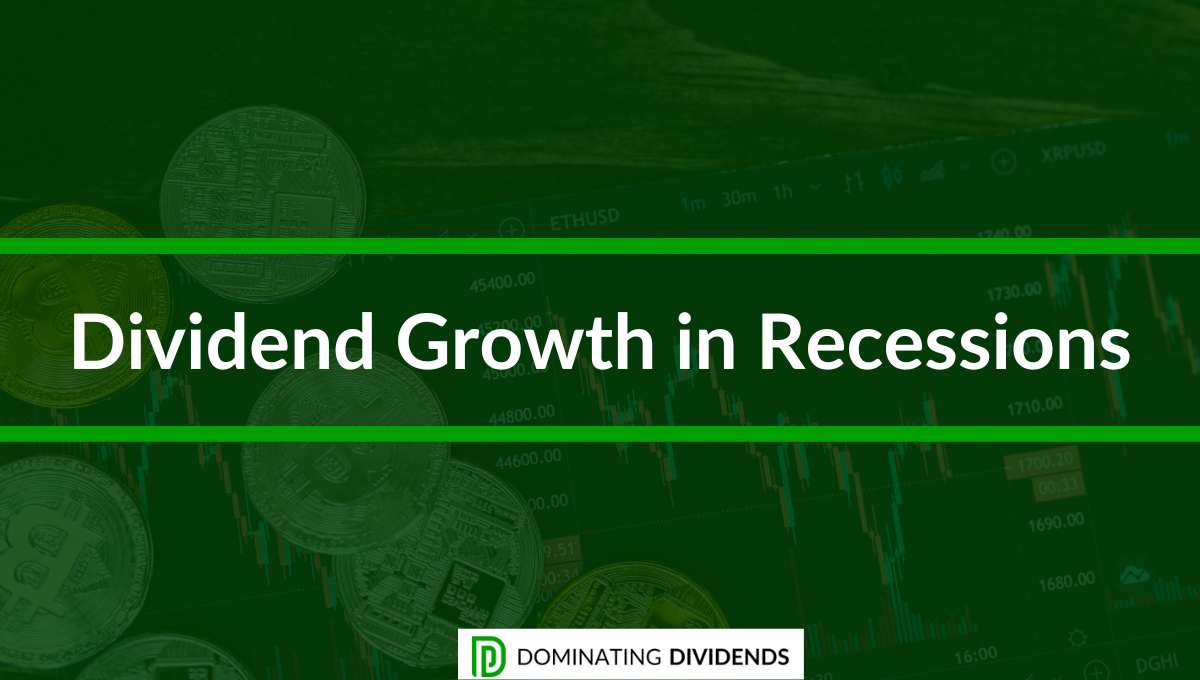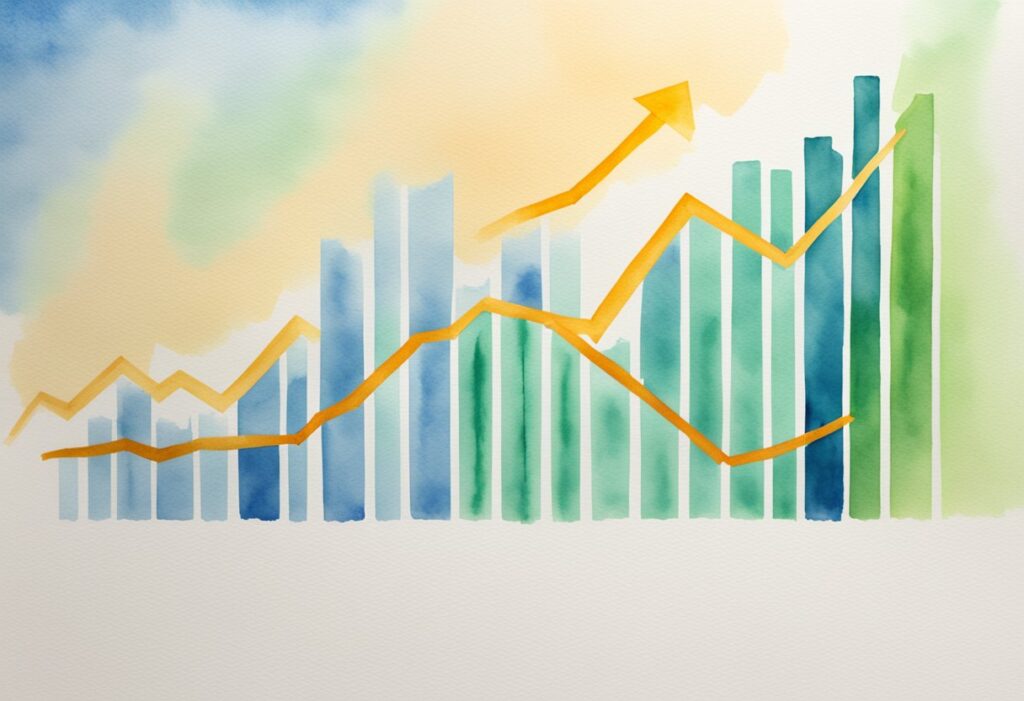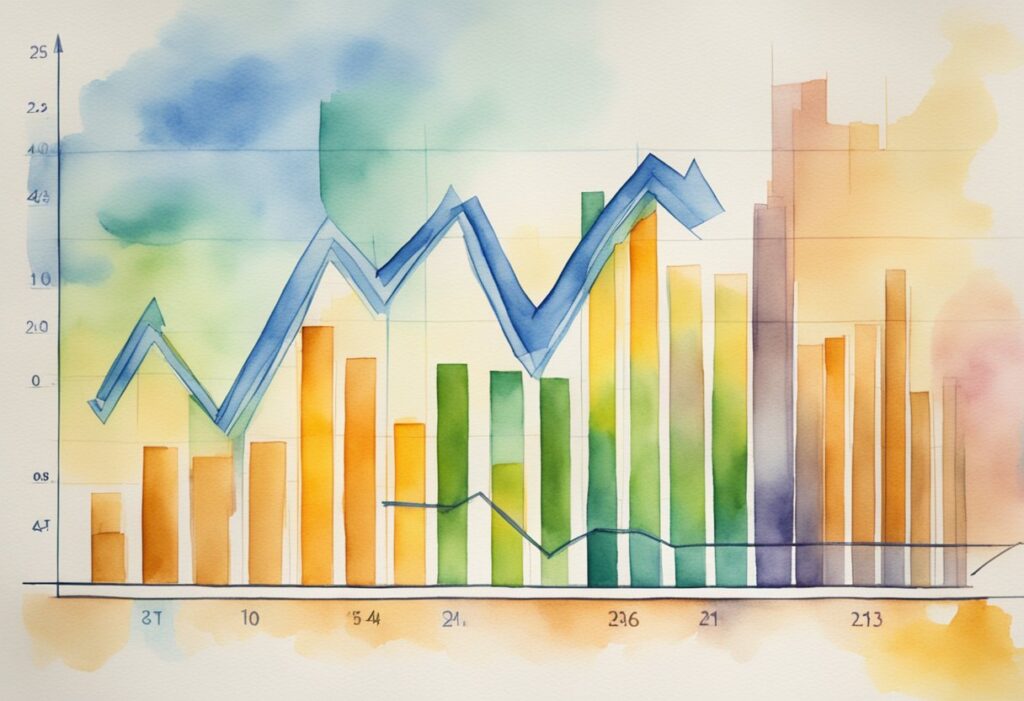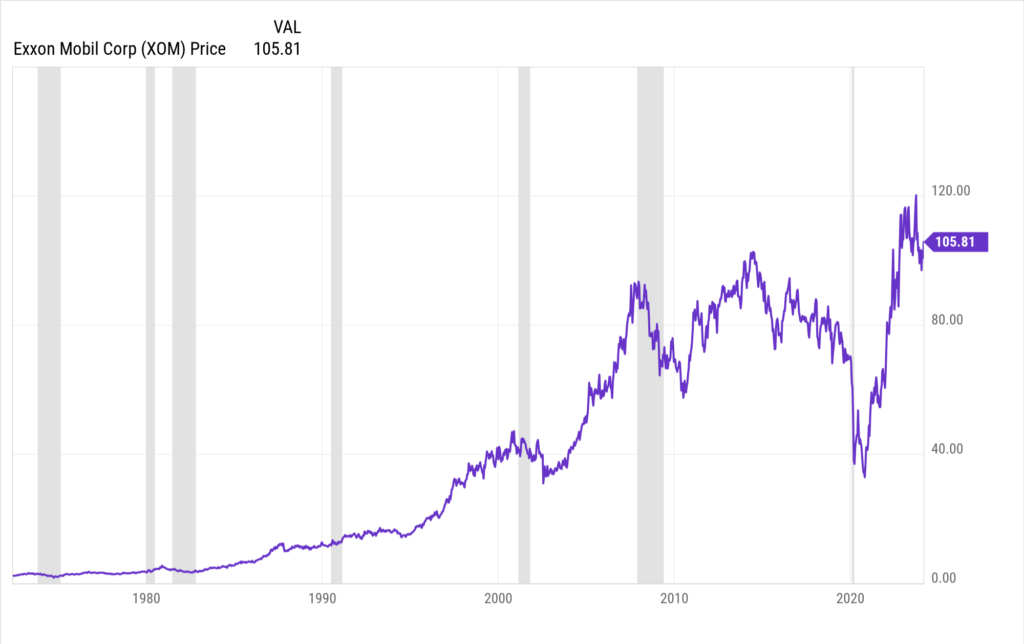Dividend Growth in Recessions: Surprising Resilience!

In times of economic uncertainty, the quest for financial stability becomes more pressing than ever. Amidst fluctuating markets and unpredictable futures, there lies a beacon of hope that not only promises resilience but also growth. This beacon, often overlooked in the clamor for short-term gains, offers a pathway to not only safeguard one’s investments but also to nurture them, ensuring they flourish even when the economic climate suggests otherwise. Join us as we explore a strategy that stands the test of time, providing a steady hand in the midst of turmoil and a promise of prosperity that endures beyond the immediate horizon.

Understanding Dividends and Recessions
In times of economic downturns, often signaled by a recession, the landscape for dividends can be complex. A recession is typically characterized by a fall in GDP growth, increased volatility, and rising interest rates, which can strain the cash flow of businesses.
Dividend payouts are a share of profits that companies distribute to their shareholders. In a robust economy, businesses often have ample cash flows, enabling them to pay out and, in many cases, increase their dividends.
However, during recessions, companies may experience cash flow constraints, leading them to maintain, reduce, or in extreme cases, suspend their dividend payments.
Bear markets, periods where stock prices are falling and pessimism prevails, often coincide with recessions. During these times, investor focus may shift towards income-generating investments, making dividend-paying stocks a potential harbor, as they can provide a steady stream of income despite share price volatility.
It’s critical to recognize that not all companies handle economic stress similarly. Some sectors may be more resilient and better positioned to maintain or even grow their dividends.
Historically, certain dividend-paying stocks have shown to be relatively stable during recessions, and dividend growth strategies can play a crucial role in maintaining and potentially growing income in such periods.
For example, when evaluating businesses during the recession of 2008, we noticed that dividend aristocrats—companies with a history of increasing dividends for at least 25 consecutive years—suffered less in terms of their stock performance compared to the broader S&P 500.
As investors, we should exercise due diligence, focusing on companies with strong balance sheets, consistent cash flow, and a history of dividend sustainability during economic contractions.
Remember, dividends can serve as a potential signal of a company’s financial health, but they are not guaranteed. Always approach dividend investing with a strategic mindset, especially during times of uncertainty.
Historical Impact of Recessions on Dividend Growth

When studying the interaction between recessions and dividend growth, key patterns emerge revealing how dividend payouts have historically weathered economic downturns.
Dividend Trends in Past Recessions
Dividend payments are generally considered a barometer of a company’s financial health and are closely tied to its earnings. During recessions, as corporate earnings face pressure, dividends may be at risk of being frozen or cut.
The stock market as a whole can experience dividend stagnation or decline during these periods. However, not all sectors respond uniformly. Utilities and consumer staples, for example, have typically shown resilience in maintaining dividends due to their steady demand regardless of economic conditions.
Moreover, inflation often accompanies recessions, which can erode the purchasing power of dividend payments. Therefore, dividend growth must not only be considered in nominal terms but also in real terms, accounting for the inflationary environment.
In the event of the coronavirus pandemic, many businesses faced unprecedented losses leading to widespread dividend cuts. Dividend stocks, especially those within industries directly impacted by the pandemic, saw significant reductions in their payouts.
In our experience, preserving capital in client portfolios during the 2008 financial crisis heavily relied on cash reserves and selecting companies with strong dividend growth records. Those dividend aristocrats provided a buffer against the volatile stock prices.
Case Studies: Dividend Behaviour During Economic Downturns
Analyzing individual case studies helps understand the nuanced behaviors of dividends during recessions.
For instance, during the recession following the dot-com bubble, technology companies, which traditionally did not emphasize dividend payouts, experienced significant losses and a re-evaluation of their growth prospects.
In contrast, the financial crisis of 2008 led to massive dividend cuts in the financial sector, once considered a reliable source for dividends.
In recent times, the COVID-19 pandemic triggered a global recession leading to a swift and significant impact on dividends. Numerous companies, especially in the travel and hospitality sectors, either reduced or eliminated dividends to preserve cash.
Yet, some sectors demonstrated resilience, and certain dividend-focused funds employed strategies that mitigated the impact on investors’ dividend income.
Remembering when the pandemic struck, we emphasized to our clients the importance of a diversified approach to dividend investing. Those who were spread across various sectors, including health care and technology, fared better than those concentrated in the hardest-hit areas.
Sector Analysis: Resilience to Recessions
Investing in dividend-paying stocks requires an understanding of how different sectors react to economic downturns. We’ll examine the resilience of specific sectors during recessions to guide our dividend growth strategies.

Energy and Utility Stocks During Recessions
Energy and utility stocks are traditionally seen as stable during economic downturns due to their inelastic demand. Utility stock dividends, in particular, are supported by consistent consumer need for water, gas, and electricity.
However, energy stocks can be more volatile given their correlation with commodity prices, which aren’t immune to economic cycles.

Stock Disclosure: At the time of publication, the author holds a position in XOM stock.
Consumer Staples: A Defensive Approach
Consumer staples are necessities that consumers buy regardless of economic conditions, which can make dividends from these sectors particularly resilient.
During various market dips, we’ve observed that dividends from consumer staples can act as a defensive buffer against the volatility seen in other sectors.
Tech Sector: Growth vs. Dividends in Recessions
The tech sector has been a mixed bag in terms of dividend reliability. While some large tech companies maintain strong cash flows and can sustain or even raise dividends, the sector as a whole often prioritizes reinvesting earnings for growth over paying dividends, leading to variable dividend fates during recessions.
Industrials and Real Estate: Variable Dividend Outcomes
Industrials and real estate stocks show varied results when it comes to dividend durability in recessions. Real estate can be hit by reduced rental income, leading to dividend cuts, whereas some industries can maintain dividends through diversified revenue streams.
Dividend cut risks are sector-specific and tied to the broader economic impact.
Investing Strategies in Recessions
As we navigate economic downturns, our investment strategies must adapt to changing market conditions. Here, we discuss key approaches to safeguard and potentially grow your investment portfolio during recessions.
Portfolio Diversification Across Sectors
Diversifying your portfolio across various sectors is crucial. Each sector reacts differently to economic stress, and sector diversification can reduce the overall risk of your portfolio.
For instance, consumer staples and healthcare often show resilience during downturns, providing a buffer against more volatile sectors.
In the 2008 recession, our focus on cross-sector diversification significantly mitigated losses for many of our client portfolios.
Seeking Current Income vs. Capital Appreciation
Prioritizing current income through interest income and dividend-paying stocks can offer stability.
During recessions, capital appreciation prospects may diminish; thus, securing investments that provide cash-in-hand returns can bring financial relief.
Dividend growth strategies, focusing on companies with a history of increasing dividends, are particularly attractive for their dual potential for income and long-term appreciation.
The Role of Cash and Cash-in-Hand Returns
Maintaining a portion of your portfolio in cash or cash-equivalent investments gives us flexibility. Cash reserves allow us to capitalize on market dips, purchasing assets at lower prices.
Additionally, investments that generate regular cash-in-hand returns, like bonds or dividend stocks, can bolster our liquidity when other revenue streams may be diminishing.
Corporate Responses to Financial Stress

In periods of financial stress, corporations are compelled to make strategic decisions that maintain balance sheet health and signal their stability to the market.
Our focus here is understanding how businesses respond through evaluating balance sheet health and interpreting the impact of dividend policy changes.
Evaluating Business’s Balance Sheet Health
When we scrutinize a business’s balance sheet, we’re essentially assessing its ability to endure economic downturns.
In my experience, a company with a strong balance sheet with liquid assets and manageable debt levels stands a much better chance of maintaining dividend payouts during challenging times. In contrast, businesses weighed down by debt may have to refinance under less favorable terms, adding to their financial strain.
- Assets: Look for high quality, easily monetizable assets.
- Liabilities: Monitor short-term and long-term debt obligations.
- Equity: Analyze retained earnings as they can be an indicator of past profitability and a buffer in lean times.
Dividend Cuts/Suspensions and Their Signals
Dividend cuts or suspensions can be deeply telling. They often indicate that a company is prioritizing liquidity and financial flexibility over rewarding shareholders.
I recall a situation where a firm’s dividend cut was a precursor to a significant restructuring effort, which ultimately laid the groundwork for a robust recovery.
However, not all dividend adjustments are a sign of doom; sometimes, they’re strategic maneuvers to reallocate capital for growth opportunities or debt reduction.
- Dividend Cuts: May preserve cash but could alarm investors.
- Suspensions: Extreme measure signaling severe financial stress or a commitment to prudent capital management.
As we navigate through these financial assessments, remember that our job is to peel back the layers of corporate strategy to understand the core financial health and future prospects of the businesses in which we invest.
Macroeconomic Indicators and Dividend Policy

In this section, we explore the nuanced relationship between macroeconomic indicators and corporate dividend policies, particularly how Federal Reserve decisions and inflationary trends can influence the ability of companies to maintain and grow dividend payouts.
Federal Reserve Decisions and Their Impact on Dividends
The Federal Reserve plays a pivotal role in shaping the economic landscape in which companies operate. When the Fed adjusts interest rates, it directly affects corporations’ cost of borrowing.
From our experience, a rise in interest rates usually leads to higher loan costs for companies, which can result in reduced cash flow available for dividends.
Conversely, borrowing becomes cheaper when the Fed lowers interest rates, which may bolster a company’s capacity to increase or maintain its dividends.
Furthermore, investor expectations of future Fed policies can influence equity valuations and, consequently, the dividends that companies are expected to distribute.
- Adjustment of interest rates: Impacts corporate borrowing costs and cash flows.
- Investor expectations: Affect equity valuations and expected dividends.
Inflation and Interest Rates as Drivers of Dividend Changes
Inflation impacts both corporate earnings and dividend policies. High inflation can erode the purchasing power of dividend payouts, leading investors to seek higher yields to compensate for the loss.
As a financial advisor, we have seen companies that are robust in managing costs and pricing power tend to sustain dividends during inflationary periods.
Alongside inflation, interest rates exert additional pressure on dividends. If interest rates are high, fixed income investments may become more attractive compared to dividend stocks, prompting companies to increase their dividends to retain investor interest potentially.
- Inflation: Erodes purchasing power, influences investor yield expectations.
- Interest Rates: Influence corporate dividend adjustments relative to fixed income investments.
External Factors Affecting Dividend Growth

In assessing dividend growth, it is essential to understand how external forces can shape company policies and investor outcomes. Let’s examine specific factors that impact dividends during challenging economic times.
Pandemic Effects: Coronavirus and Social Distancing
The arrival of coronavirus triggered an unprecedented use of social distancing measures that affected many businesses’ ability to maintain operations, impacting earnings and, by extension, dividend payouts.
For example, companies in the travel and hospitality sectors saw a significant downturn due to reduced consumer activity.
We’ve seen instances where these sectors had to cut or suspend dividends to conserve cash. The relationship between public health measures and business performance is a direct one, as The Impact of Recessions on Your Dividends details.
The Credit Crisis and Dividend Policies
The credit crisis reflects another poignant example of an external force disrupting dividend growth. With lenders tightening credit, businesses may struggle to finance operations, which can lead to reduced profitability and, ultimately, scaled-back dividends.
During the 2008 financial crisis, banks and financial institutions, once prolific dividend payers, experienced meaningful drops in their dividend payouts as they faced severe liquidity issues.
Understanding Sideways/Flat Markets
In sideways or flat markets, where stock prices show little movement, the ability of a company to grow dividends can be impacted.
Without a clear upward trajectory in stock prices to attract investment, a company’s access to capital for expansion or debt repayment can be stifled. This may compromise their ability to increase dividends.
On the other hand, well-managed companies that have diversified revenue streams and strong balance sheets can sustain and potentially grow their dividends even in less favorable market conditions.
Dividend Growth Projections and Strategies
Understanding and strategizing around dividend growth is crucial When securing reliable income in challenging economic times.
We will delve into the metrics vital for analyzing future dividend payouts and explore strategies to navigate market volatility.
Analyzing Net-Indicated Dividend Change
The net-indicated dividend change reflects the sum of all dividend increases minus all dividend decreases. To project dividend growth, we examine factors such as earnings growth, payout ratios, and historical dividend patterns.
Keep in mind that a dividend cut is often a warning sign, indicating a company’s potential cash flow issues or shifting priorities. It’s our job to look beyond the surface and interpret these changes in the context of broader economic indicators.
In my experience, a client once faced a dividend cut during a slowdown in the natural resources sector. Though alarmed, they were reassured by our analysis that highlighted the cut as part of a strategic shift rather than a signal of long-term decline.
Dividend Growth in the Context of Market Volatility
Dividend stocks are generally seen as less sensitive to volatility, offering a semblance of stability amidst market fluctuations.
A well-structured portfolio aiming for dividend growth should focus on sectors known for resilience and companies with strong balance sheets. It is important to evaluate whether a company’s dividend is sustainable when the market is turbulent.
Prioritize strong financial health indicators:
- Debt-to-Equity Ratio
- Free Cash Flow
- Earnings Stability
By carefully selecting dividend stocks with a history of growing dividends and the financial fortitude to sustain payouts, we can construct portfolios designed to weather economic downturns.
During the 2008 financial crisis, some of our portfolios, with a mix of dividend aristocrats and global diversification, managed to not only preserve capital but also experience dividend growth.
Recommended Articles
- Introduction to Dividend Growth
- Selecting Dividend Growth Stocks
- Dividend Growth vs. High Yield
- Strategies for Dividend Growth
- Long-term Benefits of Dividend Growth
- Historical Success Stories
- Dividend Growth in Recessions
- Global Dividend Growth Stocks
- Dividend Growth and Tech Stocks
- Comparing Growth Rates
